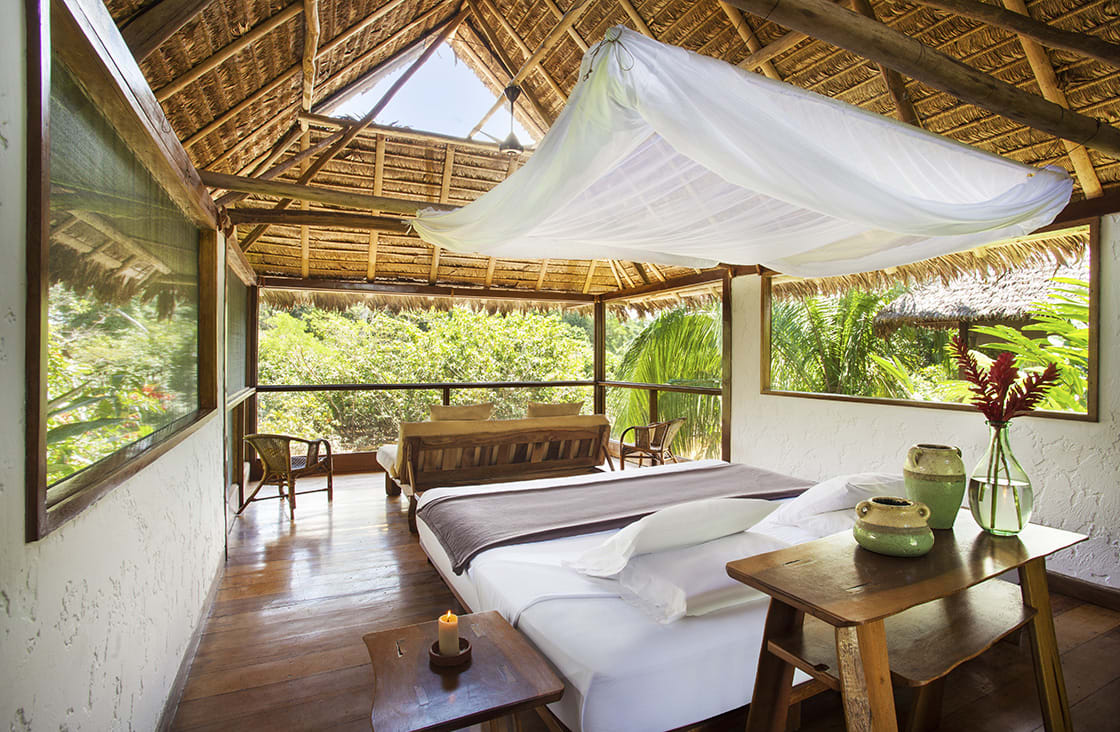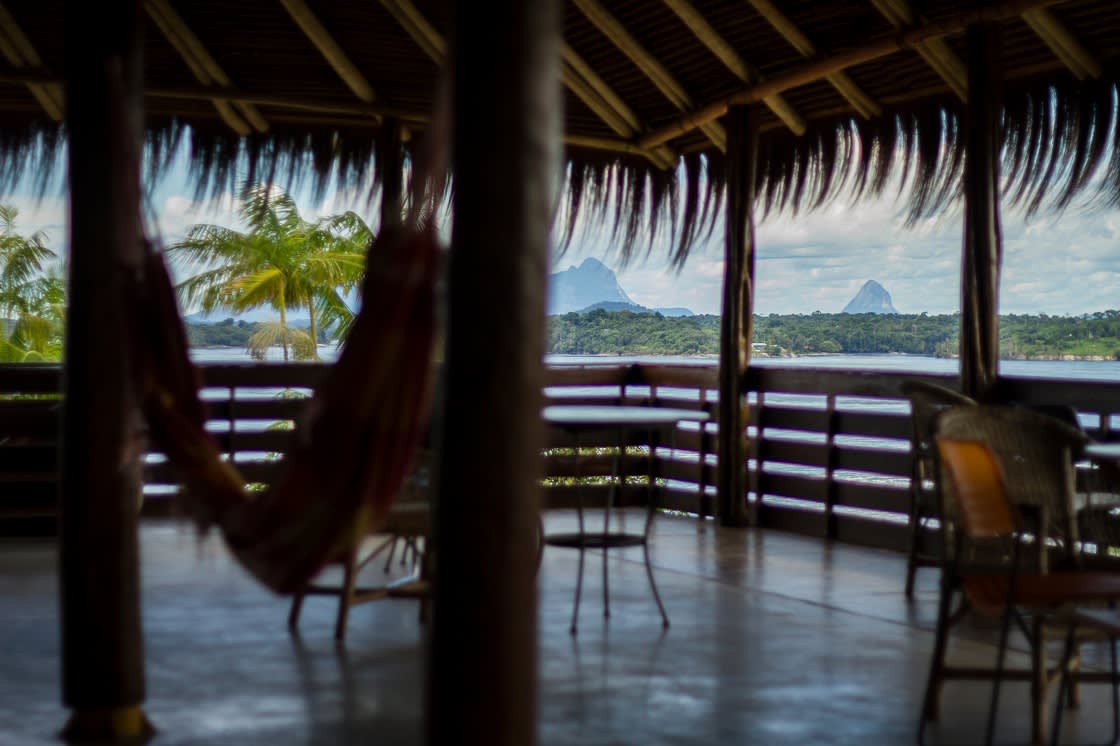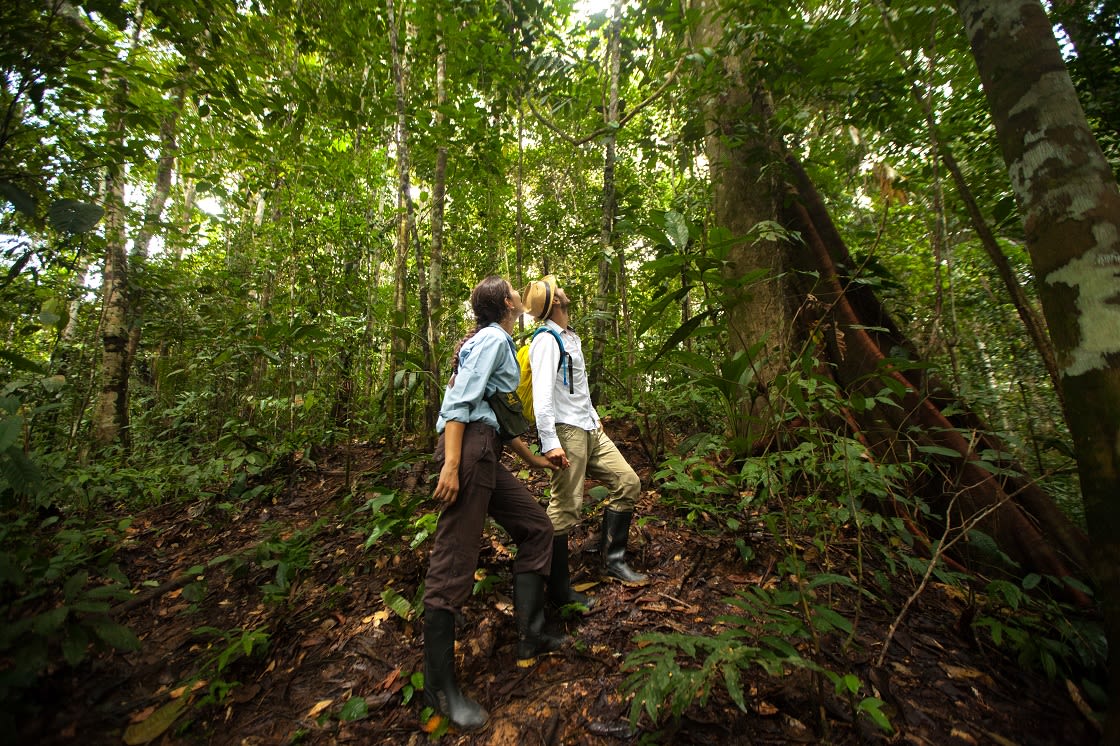
Many people assume that mosquitoes are a ubiquitous presence in places like the Amazon, and they’d be right as they do thrive in the hot, humid, and densely vegetated environment of the tropical rainforest. But did you know there are significantly fewer mosquitoes around in certain regions of the Amazon, or during certain times of the year?
To ensure the most comfortable experience possible on your trip to the Amazon, it pays to be informed about the relative prevalence of mosquitoes and to read up on the best ways to practice avoidance and to protect yourself when you are exposed.

Mosquito In The Amazon Rainforest
Of all the various types of poisonous spiders, bullet ants, assassin bugs, and Amazonian giant centipedes which can deliver painful and potentially deadly bites, by far the biggest bug risk in the Amazon is posed by the comparatively tiny, harmless-looking, and prevalent mosquito. This is because it can carry diseases such as malaria, yellow fever, dengue chikungunya, and Zika.
But it is important to remember not all mosquitoes in the Amazon are disease carriers – far from it – and even being bitten by one that is infected doesn’t automatically mean you’ll contract the disease. However, when it comes to insect-borne diseases, it’s better to be safe than sorry, so we recommend taking as many of the following precautions as possible to protect yourself.

Hut In The Rio Negro, Brazil
Many people are surprised to hear that the Rio Negro, the Amazon’s largest tributary, is virtually mosquito-free. This is due to the river’s acidic PH which prevents mosquito larvae from developing on water surfaces. So if you’re particularly concerned about the prospect of encountering hordes of mosquitoes on your Amazon trip, heading to Brazil’s Rio Negro is one option.
In comparison, so-called white water rivers like the Rio Branco in Brazil are veritable havens for them due to their mineral-rich waters. Avoiding zones with a high number of lakes, streams, ponds, and puddles where mosquitoes breed is also sensible, although that is much harder said than done when visiting a rainforest.
Depending on exactly where you are in the Amazon, there’s a chance you won’t notice many mosquitoes during the day. In most places, though, it’s a very different story at night (including dawn and dusk), when most mosquitoes and other insects are at their most active. There are numerous theories as to why this is, ranging from the lower temperatures and decreased exposure to predators, to the higher levels of UV light and calmer weather conditions that aid scent detection.
The specific type of mosquito that carries malaria – the female Anopheles – typically only bites between 9 pm and 5 am. So take special care to cover up during the evenings, as well as for any early morning trips or night walks, and be sure to use a net for sleeping.
If you’re keen to avoid the worst of the mosquitoes, then consider heading to the Amazon during the dry season, when mosquito numbers plummet as temperatures rise. Of course, it’s still important to exercise caution during drier months, wearing insect repellent and covering up, but this is one way of ensuring a more comfortable experience.
Whilst the wet season is undeniably a popular time for cruising, there are many advantages to dry season travel as well – and not just fewer mosquitoes. You’ll be able to explore on-foot areas that are otherwise flooded and inaccessible during the rest of the year. It’s also a great opportunity to spot the sorts of wildlife that thrive in low water levels, including piranha, lizards, migratory birds, and caiman.

Try to avoid exposing too much skin unnecessarily
There are numerous resources available providing excellent advice on avoiding mosquito bites, especially important in the case of malaria prevention. Here are some of our top tips for keeping yourself protected:
No matter how hard you try, then chances are you will get bitten at some point. When you do, treat the affected area with an antiseptic cream. Try your best to avoid scratching as this will only increase swelling and irritation! Bring hydrocortisone cream to help relieve the itching. For more advice on protecting yourself from mosquitoes in the Amazon or if you have any further queries or concerns about other insects prior to heading on your trip, don’t hesitate to contact us.
While Rainforest Cruises aim to provide accurate and up-to-date information, we make no representations as to the accuracy or completeness of any information herein or found by following any link on this site. Rainforest Cruises cannot and will not accept responsibility for any omissions or inaccuracies, or for any consequences arising therefrom, including any losses, injuries, or damages resulting from the display or use of this information.




